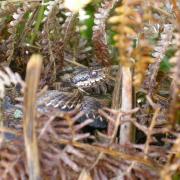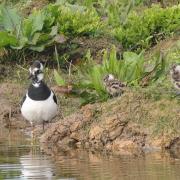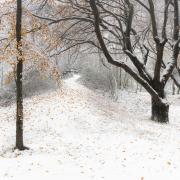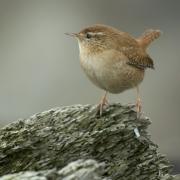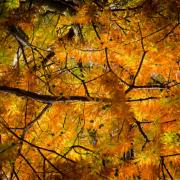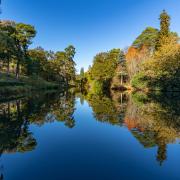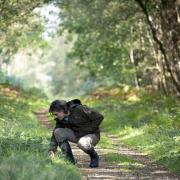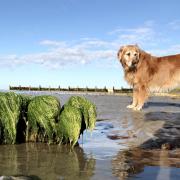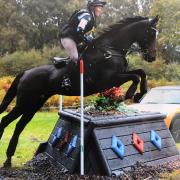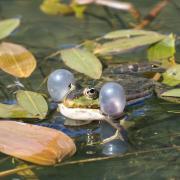Aiming to collect a quarter of the world’s plants by 2020, the Millennium Seed Bank is in Kew’s country estate at Wakehurst. Jenny Mark-Bell spoke to the team about the international, national and local applications for such an ambitious project
Amidst the formal gardens of Kew’s country estate and in the shadow of Wakehurst’s Elizabethan manor house is the Millennium Seed Bank (MSB).
Built with grants from the Millennium Commission and The Wellcome Trust, the MSB continues a project that started at Kew in the late 1960s. When the purpose-built facility opened at the turn of the century, it launched an international programme of seed collection, archiving and storage.
There is dire need for such a project. Presently, between 60,000 and 100,000 species are at risk from extinction and scientists estimate that up to a third of all plants could be extinct by the end of this century.
The MSB’s target is to collect seeds from a quarter of the world’s plants by 2020. It is quite possible that stored seeds could help bring plants back from extinction. Seeds found in a Dutch merchant’s notebook were germinated at the MSB and propagated at Wakehurst in 2008. They were 200 years old at the time.
Assistant head of collections John Dickie explains: “This is just a microcosm of what Kew and Kew Science is about, which is plants’ potential to solve some of the problems facing the world: the perfect storm of population, climate change, over-exploitation and biodiversity loss.”
Native plants are needed to regenerate landscapes all over the world due to the ravaging effects of natural disasters such as bush fires, flooding and drought, as well as man-made ones caused by war.
When the MSB was established, key geographical areas were signposted for early seed-collecting. “At the time tropical rainforests were getting all the press but drylands support a high proportion of the world’s grazing animals and quite a lot of the world’s people,” says John. “They were under threat from desertification and over-grazing. We focused on where we could do the most good in the short term to get the project up and running.”
Many countries – such as the USA, Australia and China – now have their own national seed banks but remain partners of the MSB. The ethics and legalities of seed-collecting are complex, and subject to the Convention of Biological Diversity, which recognises that the source country has sovereignty over its plant genetic resources.
“The CBD came out of a growing suspicion and resistance on the part of developing countries with a lot of biodiversity,” says John, adding that plants with interesting biochemical traits, such as applications for the treatment of disease, could have significant commercial value. “Now it is really about getting countries involved in their own plant-hunting, knowing and appreciating their own flora and taking steps to conserve it, and we’re assisting in that.”
While the MSB’s scope is truly international there are also projects very much closer to home. Clare Trivedi’s UK team has three ongoing projects, the foundation of which is the UK Flora Project with a target of banking 97 per cent of the UK’s species by 2019. Already 95 per cent of the UK’s species have been conserved, leaving only those more difficult to indentify, or those which rarely seed.
The UK National Tree Seed Bank Project is working to capture genetic diversity within each native tree species. This could have major implications in the fight against the catastrophic tree diseases recently seen in the UK such as ash dieback. “It is a unique and helpful resource for researchers working on tree health,” says Clare. “It enables them to look at variations in the resistance or susceptibility to the disease in different populations across the country, or different relationships with the pathogen in different parts of the country.
“A whole range of research is possible because of those collections. In terms of ash dieback, we work quite closely with our house tree researcher at Kew, Dr Richard Buggs, and we are actually developing some projects at the moment to study individual trees that are less susceptible than others.”
Ted Chapman co-ordinates the third UK project, the Native Seed Hub. Its remit is to increase the quality and diversity of native seeds available for conservation and habitat creation.
Local projects include creating a representative collection of the seeds associated with chalk grassland in the South Downs. There are now about 27 South Downs-origin collections comprising millions of seeds, which can be used for landscape conservation projects.
The chalk grassland of the South Downs has been heavily affected by the change in agricultural practices since World War II. They were traditionally grazed by sheep with no input of fertiliser or feed, but mechanisation enabled huge quantities of land to be cultivated and turned to arable use, as Ted explains. The areas that are left must be managed or they start to degrade: “The grasses, trees and shrubs take over and species are lost. Very often you can’t rely on natural processes to bring the plants back. That’s where the MSB can really come in because we can capture plant populations before they are lost.”
Ted explains that while some generalist grass species such as Yorkshire fog, false oat grass and upright brome have become more common, they can become invasive and start to crowd out others. Those under threat include round-headed rampion (the county flower of Sussex), horse-shoe vetch, dropwort, and some orchids. “These sorts of species are only found in chalk grassland and they are the ones that lose out. They are the ones that chalk hill blue butterflies and Adonis blue butterflies depend upon,” says Ted.
“If you lose the chalk grassland species you lose the invertebrates as well and obviously that has an impact on our birds and mammals too.
“Some of the orchids are fantastically rare, and some of the species, such as round-headed rampion, aren’t rare yet but they are declining. We want to intervene before they become really rare.”
Imagine walking the downs on a hazy summer’s day: long grass caressing your legs; the flash of a butterfly on the wing; the discreet beauty of a native orchid. Now imagine all that beauty overwhelmed by scrub, swallowed by brambles and nettles. It’s a horrifying prospect and one that exemplifies in microcosm what the MSB is mitigating against.
When he opened the Millennium Seed Bank in 2000, the Prince of Wales called it: “A gold reserve… a place where this reserve currency, in this case life itself, is stored.”
It is awe-inspiring to stand outside this unassuming building picturing the enormous and beautiful potential lying dormant within: the ultimate life insurance.
Need to know
Entry to the Millennium Seed Bank is free with your ticket to Wakehurst. The National Trust property is open every day apart from 24 and 25 December, 10am–6pm. The mansion and the Millennium Seed Bank close at 5pm (last entry 4.30pm).
Secret Structures – the inside story of plants is a fascinating exhibition revealing the hidden mysteries of plants. A micro-scanning table allows you to see the inner world of various plants, nuts and wood. An interactive digital table displays scanned specimens of a slipper orchid, a carved walnut, a whole Brazil nut fruit and a section of white oak, with explanations of these objects in the wild and their importance to the local economy. Free for National Trust members. Adult admission £12.50, children free
Wakehurst, Ardingly, Haywards Heath RH17 6TN; 01444 894000; www.kew.org/wakehurst




